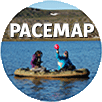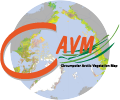
Course Archive
- All Past Courses
- BIOL 474
- BIOL 475/689
- BIOL 492/692
- BIOL 493/693
- BIOL 697
- 2010 IARC Field School
- Fulbright Scholar Lectures, Masaryk University
- Current and Recent Courses
BIOL 475/689: Vegetation Description and Analysis (3 credits)
Fall 2012 -
Syllabus: General information & grading -
Course schedule -
Full Syllabus (PDF, revised Nov. 20)
Lab Handouts & Reading materials (PDFs)
Additional resources: Plant List - Plant Characteristics - Plant Keys
Course schedule and reading assignments
Kent = Kent, M. 2012. Vegetation Description and Data Analysis: A Practical Approach. Wiley-Blackwell. New York.
MD&E = Mueller-Dombois, L.D., Ellenberg, H. 1974. Aims and Methods of Vegetation Ecology. John Wiley and Sons. New York. 547.
McC&G = McCune, B., Grace, J.B., Urban, D.L. 2002. Analysis of Ecological Communities. MJM Software Design. Gleneden Beach, OR. 304. MJM Software Design.
| Date | Topics/Activities | Reading assignments | Assignments DUE | |
|---|---|---|---|---|
| Labs are highlighted in gray. | ||||
| Wed 5 Sept |
|
| ||
| Mon 10 Sept | Lab 1b, Relevé method, Plot 1 Goal is to collect 4 relevés from each position along the toposequence (hill crest or shoulder, side slope, footslope, 12 relevés total). Be sure to carefully mark corners of plots with pin flags and get GPS coordinates so you can return to these sites. |
Kent, Chapter 2, (p. 23-48), "Environmental gradients, plant communities and vegetation dynamics". | ||
| Wed 12 Sept | Lab 1c: Relevé method, Plot 2 |
| Hand in relevé sheets at end of class for check. | |
| Mon 17 Sept | Lab 1d, Relevé method, Plot 3 |
|
Hand in relevé sheets at end of class for check | |
| Wed 19 Sept | Lab 1e, Relevé method, Plots 4 and 10 | Hand in relevé sheets at end of class for check | ||
| Mon 24 Sept | Lab 1f, Relevé method, Plots 5 and 11 Relevé data forms Vegetation Field Descriptions Handout |
Relevé data forms Vegetation Field Descriptions Handout |
Field description 1, due Wed 24 Sep | |
| Wed 26 Sept | Lab 1g, Relevé method, Plots 6 and 12 | Review relevé method and compare with Appendix D in USNVC approach (NOTE: this link has been updated to 2008, version 2) | Field description 2, due Mon 1 Oct | |
| Mon 1 Oct | Lab 1h, Relevé method, Plots 7, 8, and 9. | Field description 3, due Fri 5 Oct | ||
| Wed 3 Oct. | Lab 1i, Collect soils from all relevés and clean up plot markers | NRCS (Natural Resources Conservation Service). 2004. Soil survey of the greater Fairbanks area, Alaska Read p. 11-15, skim rest of document |
||
| Mon 8 Oct | Lab 2: Forest sampling, plotless sampling, point-centered quarter method Lab 2 handout, including calculation of importance values |
|||
| Wed 10 Oct | Lab 3: Point-intercept sampling approach, Buckner optical sighting device, and tree heights Lab 3 handout. Including sampling protocols for Optical Sighting Device and Sunto clinometer |
|||
| Mon 15 Oct |
|
Review:
|
Mid-term notebook check | |
| Wed 17 Oct |
|
Review:
|
| |
| Mon 22 Oct | Lecture 4: Soils Lecture 4: Soils |
|
||
| Wed 24 Oct | Lab 4: Herbarium: plant identification Museum Herbarium. Lab 4 Handout (Herbarium Lab) |
|
| |
| Mon 29 Oct | Lecture 5: Ordination 1: Direct gradient analysis, weighted averaging Lecture 5, Ordination 1 |
| ||
| Wed 31 Oct | Lab 5: Soils analyses: pH, grain size, soil color (Soils Lab, 335 O'Neil Bldg). Lab 5 handout (Soils) |
| ||
| Mon 5 Nov | Lecture 6: Ordination 2: Indirect ordination: Bray and Curtis ordination (polar ordination, PO). Lecture 6, Ordination 2 | Kent Chapter 6, "Ordination methods" through "Bray and Curtis (polar) ordination" (pp. 178-194). | ||
| Wed. 7 Nov | Lab 6: Species and environmental data matrices, relevé data entry and preparation for ordination with PC-Ord (computer lab, 301 Bunnell Bldg.). |
Kent Chapter 4 "Nature and properties of vegetation data", pp. 101-120 | Submit Lab #6 Final species and environmental data matrices at end of lab for check. | |
| Mon 12 Nov | Lecture 7: Ordination 3: Principal components analysis (PCA), Correspondence analysis (CA), Reciprocal Averaging (RA), Detrended correspondence analysis (DCA). Lecture 7 |
Kent, Chapter 6, "Ordination methods" through "Principal components analysis (PCA)" (pp. 194-214). | ||
| Wed 14 Nov | Lab 7: Introduction to PC-ORD - Polar ordination. Lab 7 Handout (Polar ordination) |
|
Submit Lab #7 "Polar Ordination" at end of lab for check. | |
| Mon 19 Nov | Lecture 8: Ordination 4: Reciprocal Averaging (RA), Correspondence analysis (CA), Detrended correspondence analysis (DCA). Lecture 8 |
Kent Chapter 6, through "Detrended Correspondence Analysis" (pp. 214-236). | ||
| Wed 21 Nov | Lab 8: PC-ORD – Ordination using eigenvector methods; Detrended correspondence Analysis (DCA). Exploration of NMDS, CCA, dendrograms and TWINSPAN in PC-ORD. Ina Timling's figure (computer lab, 301 Bunnell Bldg.). Lab 8 Handout |
|
Write up of Lab 7-8 (Indirect ordination) is due Monday 26 Nov. | |
| 22-25 Nov | -- THANKSGIVING BREAK -- | |||
| Mon 26 Nov | Lecture 9: Overview of:
|
| Submit Lab 7-8 "Indirect Ordination" for grade (100 pts). | |
| Wed 28 Nov | Lab 9 – Table sorting and classification of class data using Excel. (computer lab, 301 Bunnell Bldg.) Lab 9 handout |
|
| |
| Mon 3 Dec | Lecture 10: Discussion of Hollingsworth et al. (2006) (PDF); and Schickhoff et al. (2002) papers (PDF). |
|
||
| Wed. 5 Dec | Lab 10 - Table sorting, analyses for final paper (computer lab, 301 Bunnell Bldg.). | Submit Lab 9 "Sorted Tables" for grade (100 pts). | ||
| Mon. 10 Dec. | Questions and writing on papers. | First draft of papers due for check of progress. | ||
| Wed Dec 12 | Student oral presentations. | Send copy of oral presentations to Skip (100 pts for undergraduates, 200 pts for graduate students). | ||
| Fri 14 Dec. | Final papers due. Send .doc file to Skip (100 pts for undergraduates, 300 pts for graduate students). | |||







